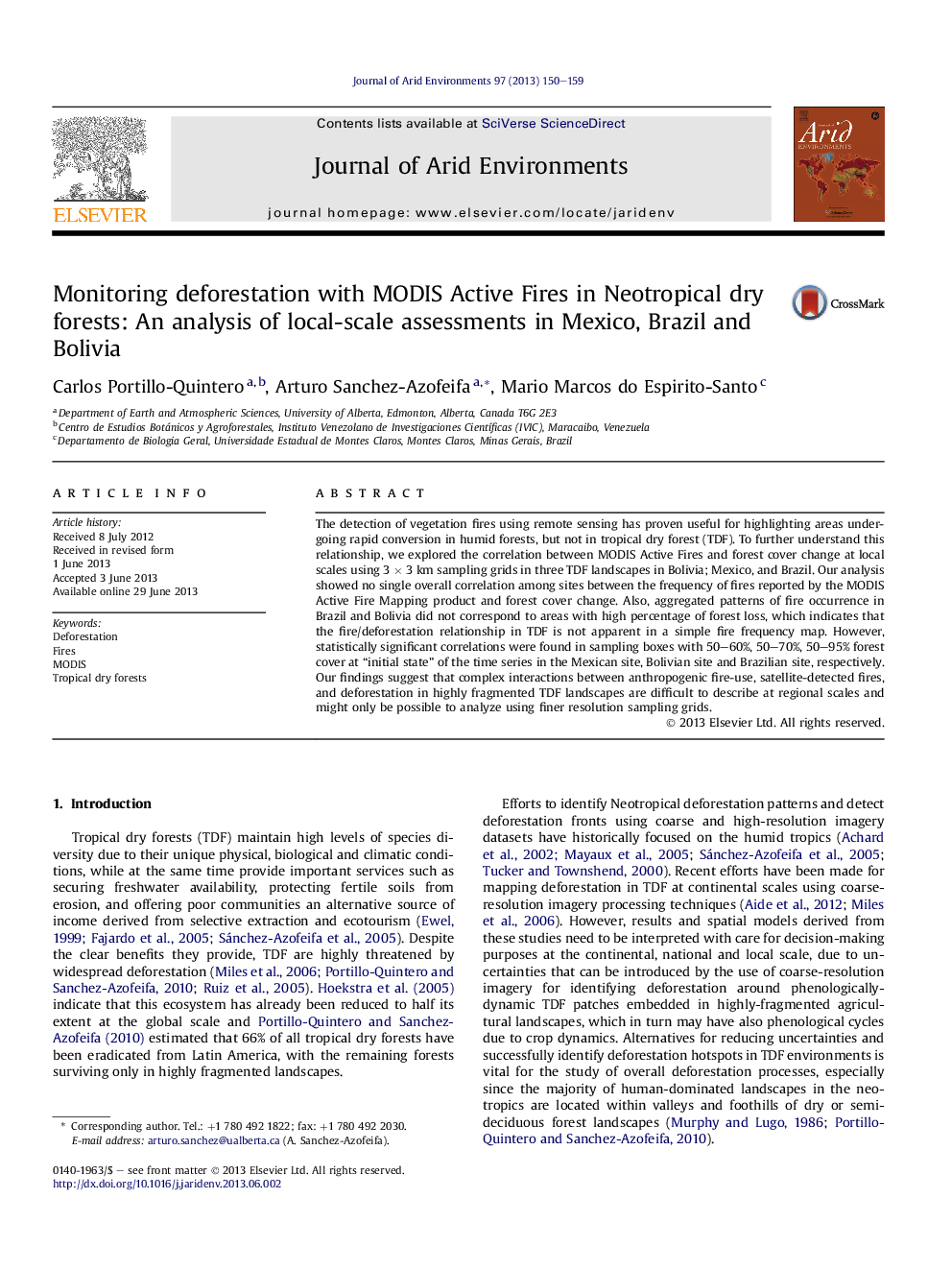| Article ID | Journal | Published Year | Pages | File Type |
|---|---|---|---|---|
| 6303557 | Journal of Arid Environments | 2013 | 10 Pages |
Abstract
The detection of vegetation fires using remote sensing has proven useful for highlighting areas undergoing rapid conversion in humid forests, but not in tropical dry forest (TDF). To further understand this relationship, we explored the correlation between MODIS Active Fires and forest cover change at local scales using 3Â ÃÂ 3Â km sampling grids in three TDF landscapes in Bolivia; Mexico, and Brazil. Our analysis showed no single overall correlation among sites between the frequency of fires reported by the MODIS Active Fire Mapping product and forest cover change. Also, aggregated patterns of fire occurrence in Brazil and Bolivia did not correspond to areas with high percentage of forest loss, which indicates that the fire/deforestation relationship in TDF is not apparent in a simple fire frequency map. However, statistically significant correlations were found in sampling boxes with 50-60%, 50-70%, 50-95% forest cover at “initial state” of the time series in the Mexican site, Bolivian site and Brazilian site, respectively. Our findings suggest that complex interactions between anthropogenic fire-use, satellite-detected fires, and deforestation in highly fragmented TDF landscapes are difficult to describe at regional scales and might only be possible to analyze using finer resolution sampling grids.
Related Topics
Physical Sciences and Engineering
Earth and Planetary Sciences
Earth-Surface Processes
Authors
Carlos Portillo-Quintero, Arturo Sanchez-Azofeifa, Mario Marcos do Espirito-Santo,
